Brigham Health Hub
Posted: Reading Time:
The Problem
Brigham and Women’s Hospital is consistently ranked as one of the top hospitals in the country but has little awareness outside New England. And in the evolving healthcare space, BWH needed to evolve their positioning as that of a leader in health and advances in science, rather than the physical construct of a hospital that treats the sick and injured.
The Target: Tenacious, Health Seeking Women
In order to get BWH out there to a wider audience, we needed to target the heads of households across the country. After preliminary research, our team discovered that women are usually the ones who manage their household's health. We segmented this large cohort into three separate groups by age, then created content pillars around each one. Empty nesters that are 55+ have very different content needs and concerns than women aged 35 with young kids.
The Solution: Brigham Health Hub
The Brigham Health Hub made people more aware, familiar and trusting of the brand.
- Goal: Expand brand awareness and engagement on a national level
- Strategy: Use target segmentation as a jumping-off point for an experience that becomes increasingly personalized and relevant
- Platform: Content hub driven by marketing automation
- Relevance: Building brand preference and affinity before the transaction; behavior-driven content strategy
Complete Redesign
Revamp of Content
Now that we had our solution, we needed to implement it. We took a look at the existing site and did an entire content audit that analyzed over 600 articles and all videos dating back to 2014. We identified over 6,700 keywords and topics and culminated them into over 100+ content recommendations to optimize the experience for SEO.
The top Brigham Health articles were determined through a “content score” based on topic relevancy, keyword mentions, user engagement, and potential impact.
Revamp of Design
Once we had content in a good place, we knew we needed a new design solution to house it all. We built a robust content engine in our Craft CMS to really make the content shine. The old experience only had a featured image and a wall of text beneath it. Now, content editors were able to log in and add in videos, pull quotes, photo galleries, audio blocks, and related content.
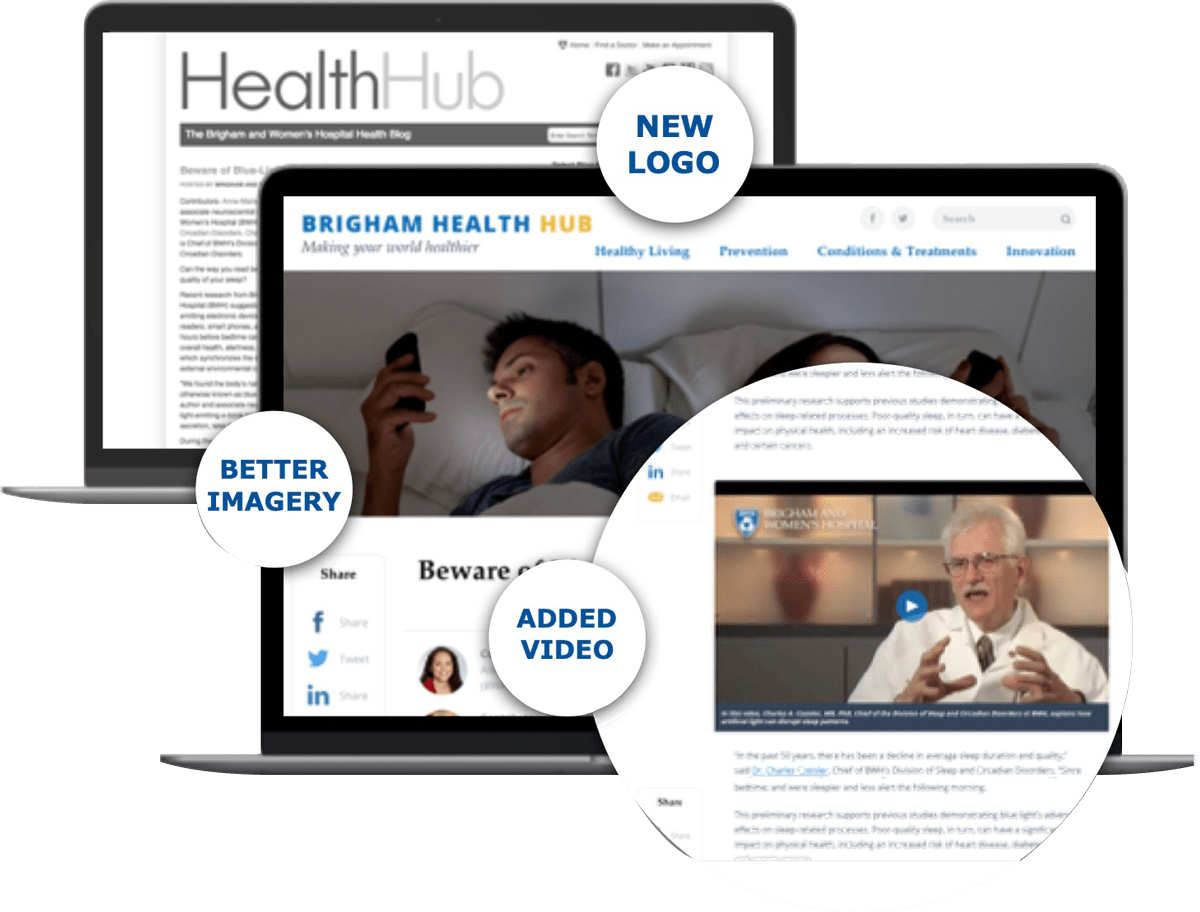
Leveraging Personalization for more Engaging & Relevant Content
We leveraged precision and personalization to bring everything together.
- Precision: Utilize machine learning to optimize where and when to best reach our target
- Personalization: Deliver a personalized Brigham Health content ecosystem
We used SalesForce's Machine Learning software, Einstein to pull this off. We created an API connection between our Craft CMS instance that delivered content to their index. As users visited our site and engaged with our content, we anonymously recorded all of that information and attributed it back to them in SalesForce. After landing on 2 or 3 pages, we had a pretty good idea as to what cohort they were in based on our personas and how we tagged content. In one visit we were able to personalize the experience for them.
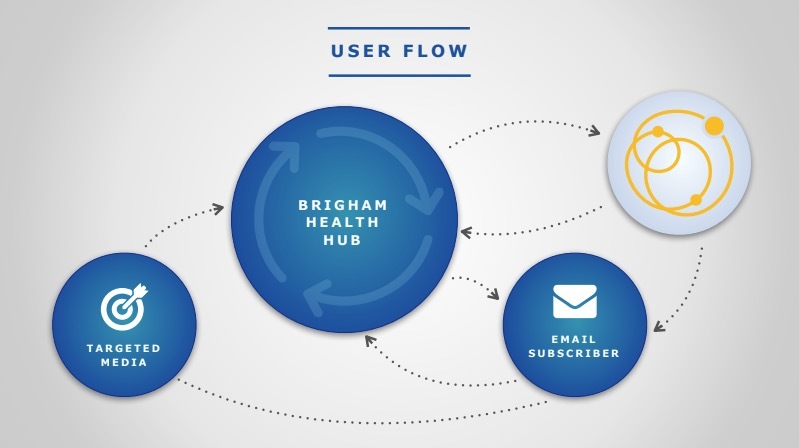
Personalization on the Web with SalesForce's Einstein AI

Personalized CRM Emails with SalesForce's Einstein AI
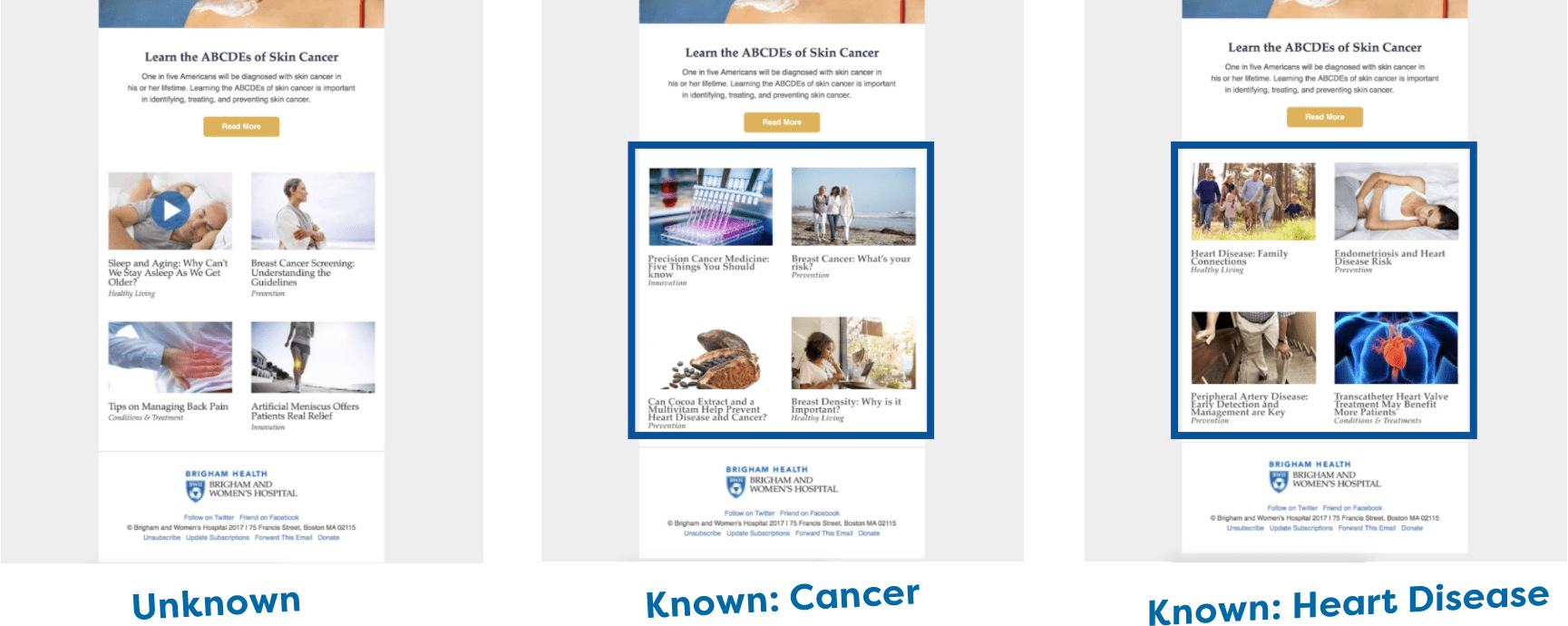
A Phased Approach
Like most digital projects, we approached this project in phases. Phase 1 was all about testing our assumptions and fine-tuning the personalization engine, email cadence schedule, and getting our brand voice just the way we wanted it. We had media turned on for this phase, but it was pretty nominal compared to phase 2.
While phase 1 was going on, we took a look at the analytics and made some improvements to our experience to help push our campaign KPIs forward. Since this campaign was all about national awareness, email collection was a big step in getting our users through the Unknown -> Known - > Connected funnel.
To improve email signup, we built a new component that would allow content editors to put sign up forms wherever they wanted in an article, instead of just at the bottom. We also added the ability to pop up a modal with the form in it if a user engaged with the content by scrolling 50% of the way down the page. This saw an increase in email conversion of 118.6% from Phase 1 to Phase 2.
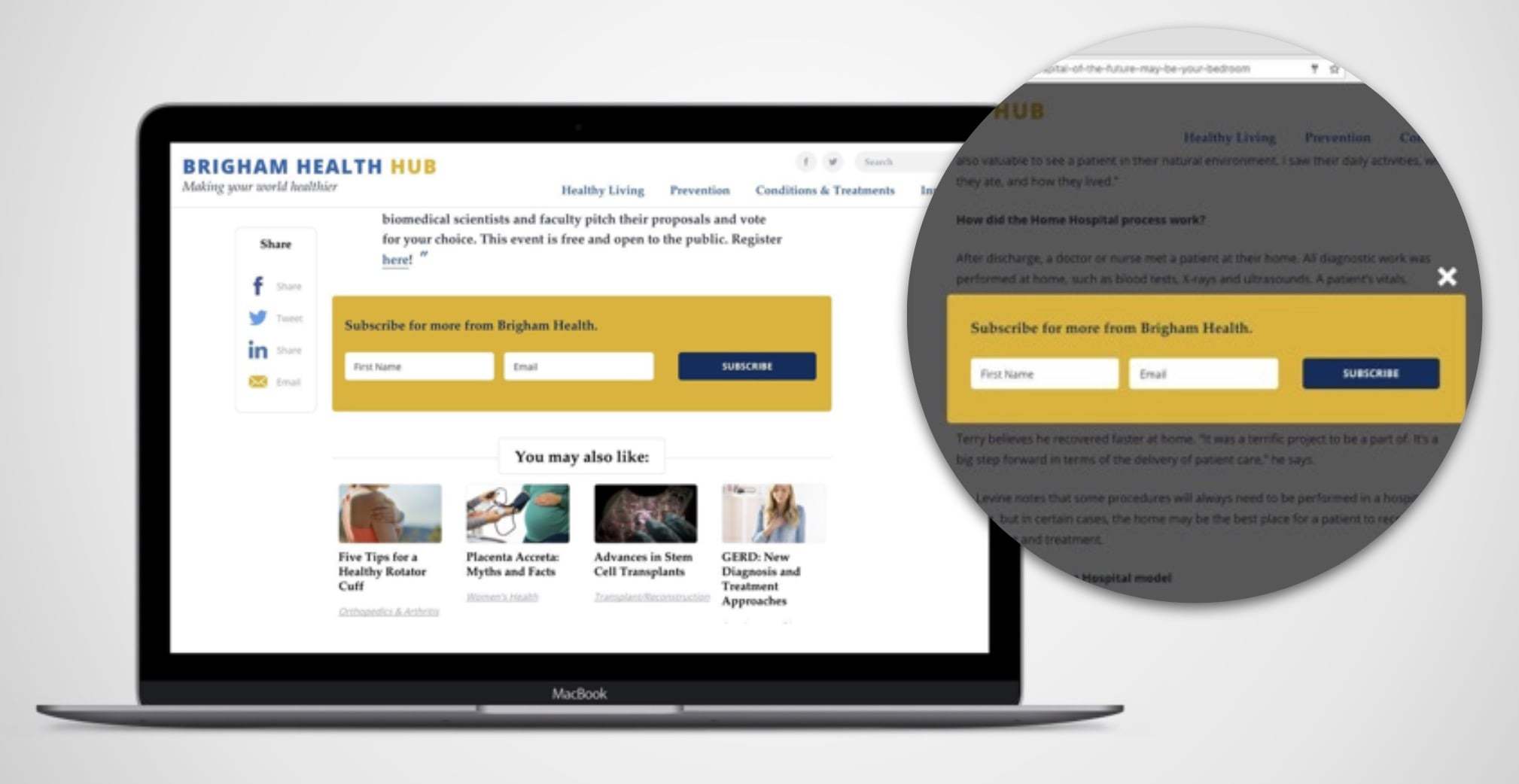
Campaign Results
Speaking of results, email signups weren't the only KPI we saw go up. We saw the average time on page go up 113%, return visitors up 45%, and social shares up 120%. We also saw total traffic nearly quadruple, from over 500,000 in phase 1 to over 2,000,000 by the end of phase 2.
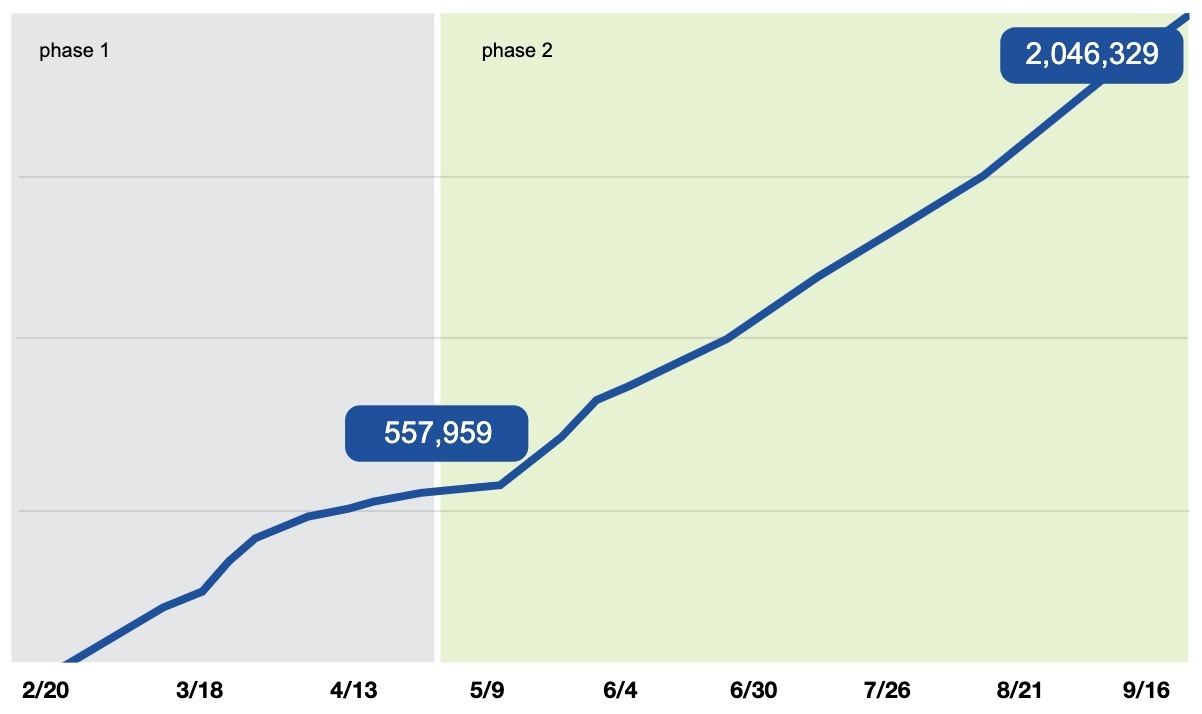
HealthCare Internet Conference - Austin 2017
We were fortunate enough to present this case study and our learnings at the Healthcare Internet Conference in Austin in 2017. My old boss, Scott Rabschnuk, and our clients presented on stage and talked about the trials in getting started with marketing automation, what we learned, and what our key takeaways to getting started in this space. Here's what we came up with:
- Invest in digital to maximize your content ROI
- The audience must be known before they can connect to your brand
- Partner with experts in digital automation and content management platforms
- Maximize reach through the strategic use of media
- Continually test and measure every aspect of your campaign for optimal results
Thanks to the Team
Shout out to Max McClaskie, the other creative technologist on this project who brought a lot of this to life. Maggie Foley and Sam Catoggio for their awesome research, UX, and design skills. Faith Markham taught me a ton about content development and strategy. Chris Alberto did an awesome job checking this thing for bugs. Kate Lindzmeyer was amazing on the account side as well.
If you have a marketing automation campaign or content hub that you need help with, I'd love to help out!